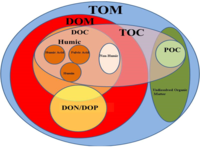
Photo from wikipedia
Neutrophil responses are critical during inflammatory and infective events, and neutrophil dysregulation has been associated with poor patient outcomes. Immunometabolism is a rapidly growing field that has provided insights into… Click to show full abstract
Neutrophil responses are critical during inflammatory and infective events, and neutrophil dysregulation has been associated with poor patient outcomes. Immunometabolism is a rapidly growing field that has provided insights into cellular functions in health and disease. Neutrophils are highly glycolytic when activated, with inhibition of glycolysis associated with functional deficits. There is currently very limited data available assessing metabolism in neutrophils. Extracellular flux (XF) analysis assesses real time oxygen consumption and the rate of proton efflux in cells. This technology allows for the automated addition of inhibitors and stimulants to visualise the effect on metabolism. We describe optimised protocols for an XFe96 XF Analyser to (i) probe glycolysis in neutrophils under basal and stimulated conditions, (ii) probe phorbol 12-myristate 13-acetate induced oxidative burst, and (iii) highlight challenges of using XF technology to examine mitochondrial function in neutrophils. We provide an overview of how to analyze XF data and identify pitfalls of probing neutrophil metabolism with XF analysis. In summary we describe robust methods for assessing glycolysis and oxidative burst in human neutrophils and discuss the challenges around using this technique to assess mitochondrial respiration. XF technology is a powerful platform with a user-friendly interface and data analysis templates, however we suggest caution when assessing neutrophil mitochondrial respiration.
Journal Title: Frontiers in Immunology
Year Published: 2023
Link to full text (if available)
Share on Social Media: Sign Up to like & get
recommendations!